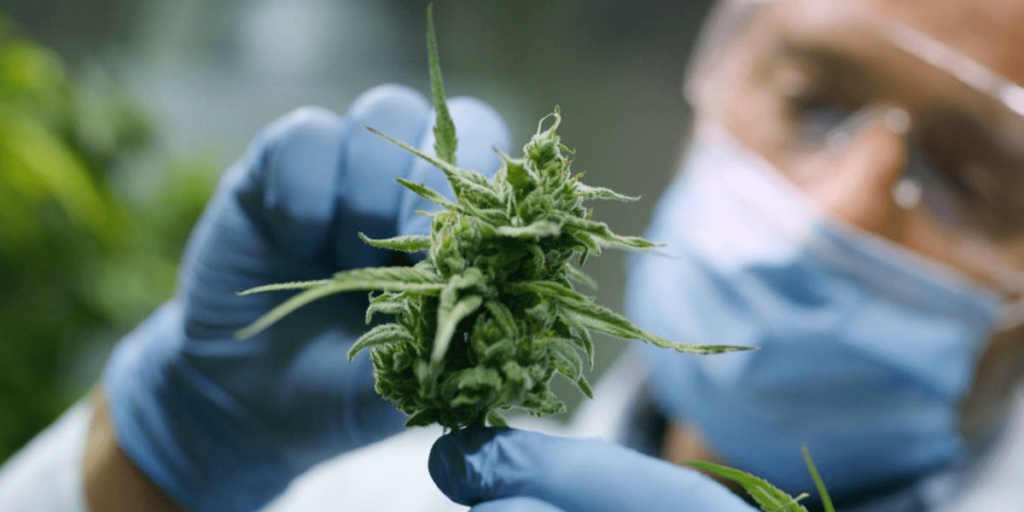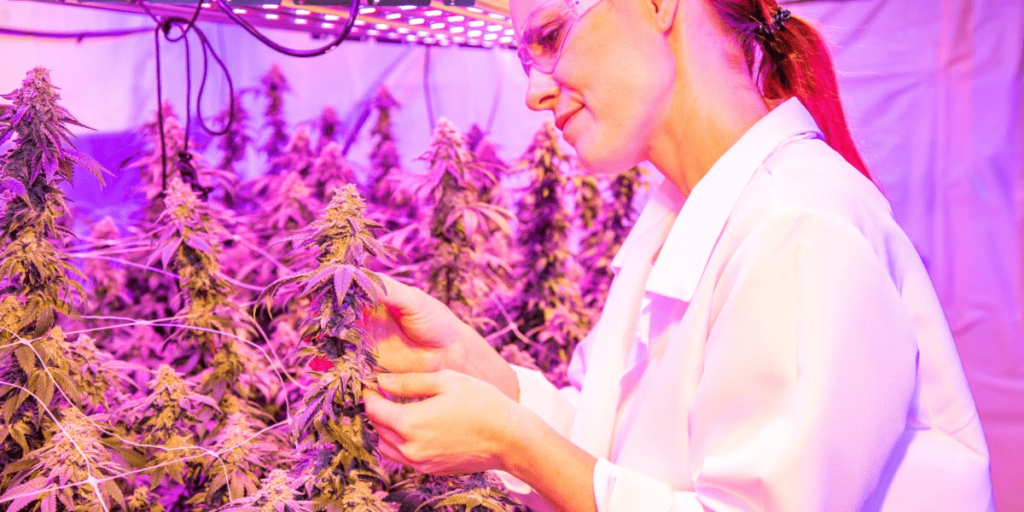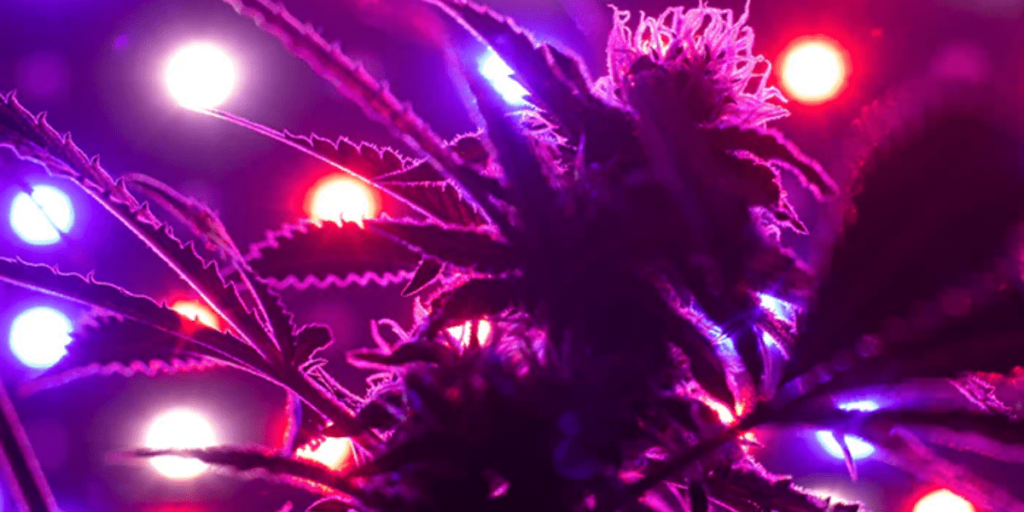Improve cannabis root health is key to achieving strong growth and high yields. Healthy roots absorb water and nutrients efficiently while providing stability for the plant. Whether you’re a beginner or an experienced grower, focusing on root care builds a solid foundation for thriving cannabis plants.
This guide offers straightforward, science-backed tips to help you create the ideal root environment. Plus, we’ve added a brief FAQ at the end to answer common questions from growers. Let’s begin!
Why Strong Roots Matter When You Improving Cannabis Root Health
Cannabis roots are more than just anchors,they are the plant’s water pipeline, nutrient highway, and structural foundation. A healthy root system ensures that your cannabis plant can absorb nutrients efficiently, resist diseases, tolerate environmental stress, and support heavy bud production during flowering.
When root health is optimal, you’ll see:
✔ Rapid vegetative growth
✔ Thick, lush foliage
✔ High cannabinoid and terpene yields
✔ Resistance to pests, pathogens, and heat or drought stress
But if roots become weak or diseased, symptoms quickly appear:
✘ Yellowing or curling leaves
✘ Wilting despite watering
✘ Stunted growth and poor bud formation
✘ Increased risk of root rot, fungal infections, or plant death
In short, strong roots = strong plants. Whether you’re a home grower or a commercial cultivator, prioritizing root health is one of the smartest moves you can make to boost quality and yield.
How to Improve Cannabis Roots Health Step-by-Step
1. Create the Right Environment to Support Healthy Cannabis Roots
Roots thrive only when their environment is carefully controlled. Whether you’re growing in soil, coco, or hydroponics, root zone conditions directly impact nutrient uptake and disease resistance.
- Choose a breathable medium: Use well-draining soil, or better yet, a blend like coco coir + perlite (30–50%) to maximize aeration and water retention balance.
- Hydroponic growers: Keep root zone temperatures between 65–70°F (18–21°C), ensure constant oxygenation with air stones, and always keep roots away from light to prevent stress and algae growth.
- Monitor pH closely: Roots can’t absorb nutrients properly outside the ideal range. Aim for pH 5.8–6.5 in hydro and coco, and 6.0–6.8 for soil-based grows.
Pro Tip: When transplanting cannabis, handle the root ball gently and avoid exposing roots to light or wind. A stress-free transplant encourages continued growth and stronger structure.
If you’re just moving your young plants into a new container, transplanting them the right way can make all the difference in protecting those fragile roots.
2. Avoid Overwatering — A Major Threat to Root Health
Overwatering suffocates roots, reduces oxygen availability, and creates the perfect breeding ground for pathogens like Pythium (root rot fungus).
- Let the topsoil dry before watering again (1–2 inches of dryness is a good benchmark).
- Lift the pot,well-watered pots feel heavier. Learn the weight of a perfectly watered vs. dry container.
- Improve drainage with materials like perlite or vermiculite, which help excess water escape quickly.
- Avoid oversized containers too early,too much unused wet medium increases rot risk.
Reminder: Anaerobic conditions from soggy roots promote harmful microbial growth. This is often the #1 silent killer in beginner grows.
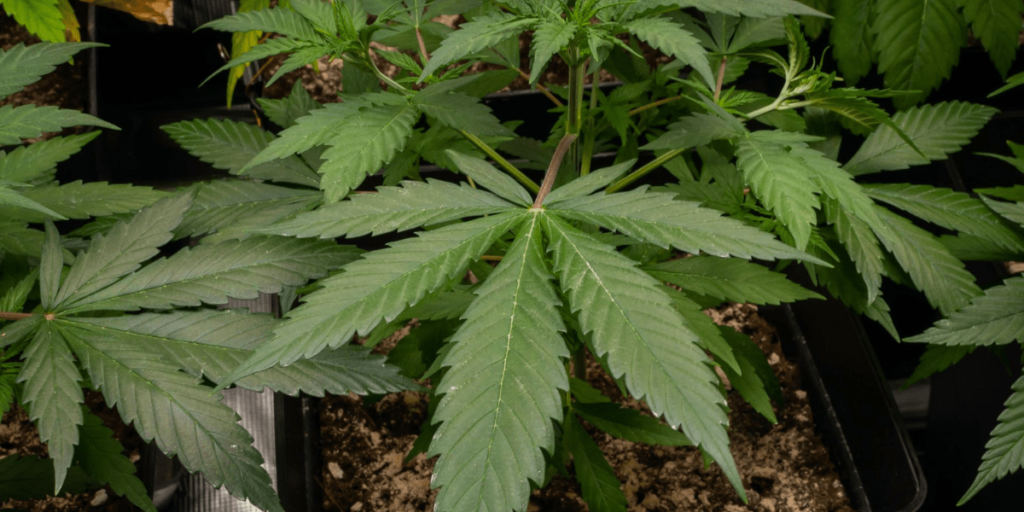
3. Use Root-Boosting Additives to Improve Cannabis Root Structure
Feeding the root zone with the right supplements can stimulate vigorous growth and improve nutrient efficiency.
Recommended additives:
- Mycorrhizal fungi – Symbiotic fungi that expand root absorption surface, improving phosphorus and water uptake.
- Beneficial bacteria (e.g., Bacillus strains) – Compete with pathogens and enhance soil microbiology.
- Enzymes – Break down dead roots and organic matter, making nutrients more available.
- Kelp extract / Silica (Si) – Strengthen root cell walls, helping roots resist drought, heat, and disease.
- Humic / Fulvic acids – Enhance nutrient chelation and root zone mobility.
Popular products: Great White, Recharge, Hydroguard, Mammoth P
Use additives moderately and according to label instructions. Overuse can lead to nutrient lockout or microbial imbalances.
4. Keep Your Grow Area Clean to Prevent Cannabis Root Problems
Roots are easily infected by bacteria, fungi, and viruses,especially in wet, warm, and poorly maintained grow areas.
Best practices:
- Sterilize tools, pots, and trays between each cycle or transplant.
- Clean hydroponic systems regularly, flushing out biofilm and organic buildup.
- Remove dead plant material promptly,decaying roots or stems can harbor pathogens.
- Use filters and UV sterilizers in recirculating systems for added protection.
Hygiene = Prevention. A few minutes of cleaning can save weeks of recovery from disease outbreaks.
5. Train Your Cannabis Plants to Maximize Root Health and Space
Plant training isn’t just for better light distribution,it also encourages more robust root systems.
- LST (Low-Stress Training) and topping techniques signal the plant to build stronger roots to support wider canopies.
- Up-potting gradually (small → medium → large containers) helps roots naturally expand without excess moisture sitting around.
- Avoid over-potting early — a large pot with a small root ball increases the chance of stagnant water zones.
Root Tip: A well-trained plant above ground usually mirrors well-developed roots below.some growers even use gentle plant training techniques to promote a more balanced canopy and healthier root development.
Spotting and Preventing Cannabis Root Diseases Early
Root diseases can be silent killers. Often, by the time you notice something above ground,yellowing leaves, drooping stems,the damage below may already be serious. Let’s explore two of the most common cannabis root problems and how to prevent or treat them effectively.
Root Rot (Pythium): Signs, Causes, and How to Fix It
Root rot, often caused by Pythium fungi, is the most prevalent and devastating root disease in cannabis, particularly in hydroponic or overwatered environments.
1. Causes:
- Waterlogged growing medium with poor drainage
- Low oxygen levels in the root zone
- High temperatures (especially above 72°F / 22°C) which speed up pathogen growth
- Contaminated water or tools introducing fungal spores
2. Symptoms:
- Roots turn dark brown or black, often slimy to the touch
- A sour, foul odor from the root zone
- Upper leaves yellow, wilt, and may fall off
- Stunted growth despite proper lighting and nutrients
3. Prevention:
- Avoid overwatering,ensure the medium dries slightly between irrigation cycles
- Maintain root zone temperatures at 65–70°F (18–21°C)
- Use well-aerated substrates or oxygenation systems in hydroponics (e.g., air stones)
- Sterilize equipment before each use
- Consider adding beneficial microbes like Bacillus subtilis or Trichoderma to outcompete pathogens
4. Treatment:
- Remove all infected root tissue with sterile scissors
- Flush the system and replace nutrient solution
- Add enzymes or probiotics to support recovery (e.g., Hydroguard, Piranha)
- In soil, consider transplanting into fresh, sterile medium if the infection is advanced
Root rot is easier to prevent than cure,regular inspections and environmental control are your best defense.
Want more detailed tips on how to prevent cannabis root rot? Check out our guide on how to prevent root rot in cannabis for additional prevention strategies.
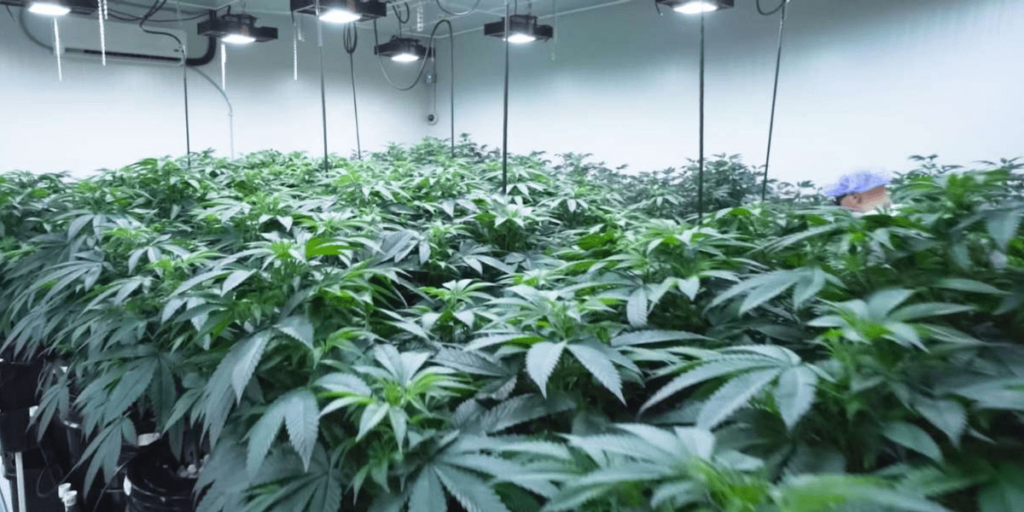
Root Knot Nematodes: What They Are and How to Keep Them Away
Root-knot nematodes are microscopic, parasitic worms that attack cannabis roots by tunneling into them and forming galls (knots), which interfere with nutrient and water uptake.
1. Causes:
- Contaminated or unsterilized outdoor soil
- Reusing soil without proper disinfection
- High nematode populations in unmanaged growing areas
2. Symptoms:
- Small galls or lumps on the root surface
- Yellowing, stunted plants despite good nutrition
- Wilting during hot parts of the day even with sufficient watering
- Poor bud development and low yields
3. Prevention:
- Avoid using outdoor garden soil indoors
- Solarize soil before use (leave moistened soil in a clear plastic bag under sunlight for 4–6 weeks to kill pests)
- Introduce biological controls, such as:
- Paecilomyces lilacinus (a parasitic fungus targeting nematodes)
- Beneficial nematodes that prey on harmful species
- Rotate crops and avoid growing cannabis repeatedly in the same soil if growing outdoors
4. Treatment:
- Remove heavily infested plants and discard infected soil
- Use organic or chemical nematicides (e.g., neem-based products or oxamyl,always follow safety guidelines)
- In hydroponic systems, disinfect the reservoir and root zone thoroughly, and consider switching to sterile media
Healthy, fast-growing roots can often tolerate small nematode populations, so boosting overall root vitality is a key long-term strategy.
How Cannabis Root Needs Evolve at Each Growth Stage?
Healthy cannabis roots don’t just “happen”,they evolve with each stage of the plant’s life cycle. Supporting root health at every phase is essential for vigorous vegetative growth and high-yield flowering. Let’s break it down:
Seedling to Vegetative Stage: Laying the Foundation for Root Strength
During the early stages, your cannabis plant’s energy is primarily focused below ground. Roots are rapidly developing to anchor the plant and build a robust network for water and nutrient absorption.
1. Root Development Focus:
- Root initiation and branching: The taproot extends downward while lateral roots begin to form a fibrous structure.
- Root hairs emerge, increasing surface area for nutrient uptake.
2. Nutritional Needs:
- High nitrogen (N) is critical,it supports cell division in both roots and new shoots.
- Supplement with a balanced vegetative nutrient mix (e.g., 3-1-2 or 4-2-3 NPK ratio).
- Small amounts of calcium and magnesium also aid in early root tissue formation and enzyme activation.
3. Watering Strategy:
- Avoid overwatering too much moisture restricts oxygen and can damage delicate root tips.
- Use a light watering schedule: allow the top 1–2 cm of the medium to dry out between waterings.
- Monitor media moisture with a soil probe or by weight (a light pot usually means it’s time to water).
4. Growing Tips:
- Choose a light, well-aerated substrate like a coco coir + perlite mix to promote oxygen availability and prevent compaction.
- In hydroponics, maintain EC between 0.8–1.2 and pH between 5.8–6.2 for optimal nutrient absorption.
Flowering Stage: Sustaining Roots for Heavy Bud Production
As cannabis transitions to flowering, the plant’s hormonal balance shifts from vegetative expansion to reproductive growth. Although above-ground development gets the spotlight, your roots remain just as vital behind the scenes.
1. Root Development Focus:
- Roots now focus less on expansion and more on efficient nutrient transport to support bud formation.
- Maintaining root health and avoiding stress during this phase is critical for achieving high yields.
2. Nutritional Needs:
- Transition to a bloom nutrient formulation with:
- Higher phosphorus (P): supports flower initiation and root enzyme activity.
- Higher potassium (K): strengthens root systems, enhances water regulation, and boosts flower density.
- Ideal NPK ratios often fall around 1-3-2 or 2-4-4, depending on strain and growing method.
- Continue supplying micronutrients like sulfur, iron, and magnesium, which remain essential for root metabolic function.
3. Watering Strategy:
- Maintain consistent moisture, but avoid waterlogging roots still need oxygen.
- Ensure your pots or system have excellent drainage.
- In DWC or NFT systems, keep water temperature stable between 65–70°F (18–21°C) and use air stones to ensure continuous oxygenation.
4. Pro Tip:
- During early flowering (weeks 1–3), plants still experience a “stretch” phase,don’t neglect root needs during this rapid growth period.
- Consider using root-strengthening supplements like silica or seaweed extract to reduce stress and promote nutrient uptake efficiency.
Summary: Stage-Specific Root Priorities
| Growth Stage | Root Focus | Key Nutrients | Watering Tips |
|---|---|---|---|
| Seedling → Veg | Expansion, root hair formation | High Nitrogen (N), Ca, Mg | Light, frequent watering; avoid saturation |
| Flowering | Nutrient transport, stability | High Phosphorus (P), Potassium (K), micronutrients | Maintain moisture, ensure drainage, oxygenate hydroponic roots |
Cannabis Root Health FAQ: Real Grower Questions Answered
Q1: Why are the bottom leaves of my cannabis plant turning yellow? Is it a nutrient deficiency?
A: Not necessarily. Yellowing lower leaves often indicate root zone problems such as overwatering, poor drainage, or nutrient lockout caused by incorrect pH. Check root health, soil moisture, and drainage before adjusting nutrients.
Q2: Can I cut off brown or rotting roots? Will the plant survive?
A: Yes, but only if necessary and with care. In hydroponics, remove rotting roots gently and clean the system thoroughly before replacing the nutrient solution. In soil grows, it’s better to improve drainage and reduce moisture than to cut unless the roots are clearly decayed and smell foul.
Q3: How can I tell if my cannabis roots are healthy?
A: Healthy roots are white to cream-colored, firm, and have a fresh, earthy smell. Unhealthy roots turn brown or black, feel soft or slimy, and may smell sour or rotten,signs of root rot or anaerobic conditions.
Q4: If I’m using compost tea, do I still need root boosters?
A: Not always. A properly brewed compost tea introduces beneficial microbes that can enhance root health naturally. However, if you’re growing in a sterile or hydroponic setup, additional microbial inoculants like mycorrhizae or enzyme products can still be beneficial.
Q5: Should I trim roots during transplanting?
A: Only if the roots are severely root-bound and circling the pot. Instead of cutting, gently loosen or “tease” them to encourage outward growth in the new container. Avoid aggressive trimming unless addressing root damage or disease.
Final Thoughts on Keeping Your Cannabis Roots Thriving
Your cannabis plants might not speak, but their roots do,through the way they grow, bloom, and respond to their environment. A healthy root zone is cool, dark, clean, and well-aerated and just moist enough to allow roots to breathe, not drown. When you support the roots, the entire plant flourishes,leading to stronger stems, richer foliage, and ultimately, heavier, higher-quality yields.
And remember: roots are quiet workers. They thrive in peace, away from light, noise, and disruption. Treat them like VIPs with oxygen, balance, and care and they’ll reward you underground while your buds take the spotlight.
Want more expert growing tips? Follow us on Instagram @Greenfuturelight for daily cultivation insights, behind-the-scenes growing setups, and the latest in hydroponic innovation.
Visit us at www.greenfuturelight.com to discover professional-grade grow lights, root-friendly hydroponic tools, and helpful resources designed for both beginners and advanced growers.
Ready to upgrade your grow room?
Explore our LED Grow Light Collection,engineered to maximize plant performance and root health.
Need personalized advice for your grow setup?
Contact our expert team for a free one-on-one consultation,we’re here to help you grow smarter.
Keep growing, keep thriving from the roots up.

